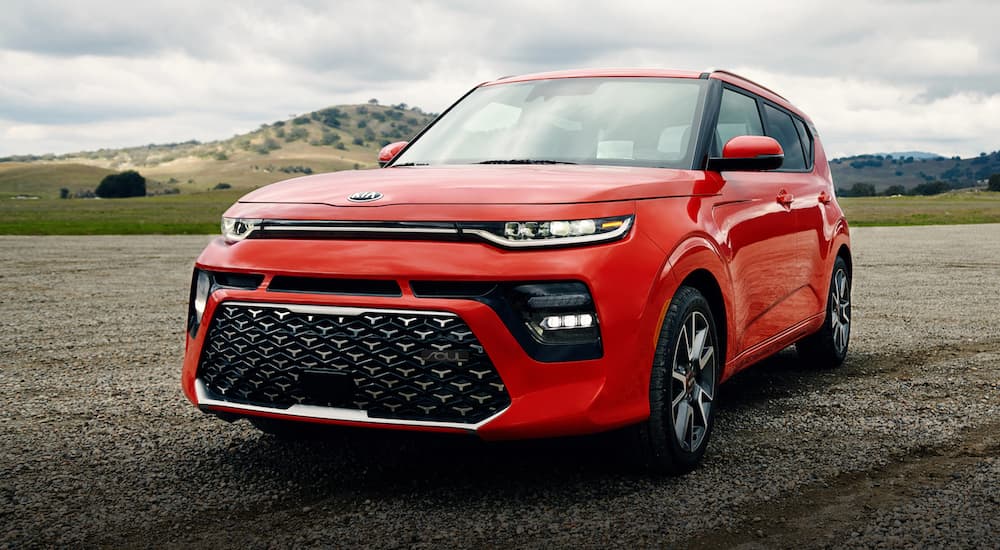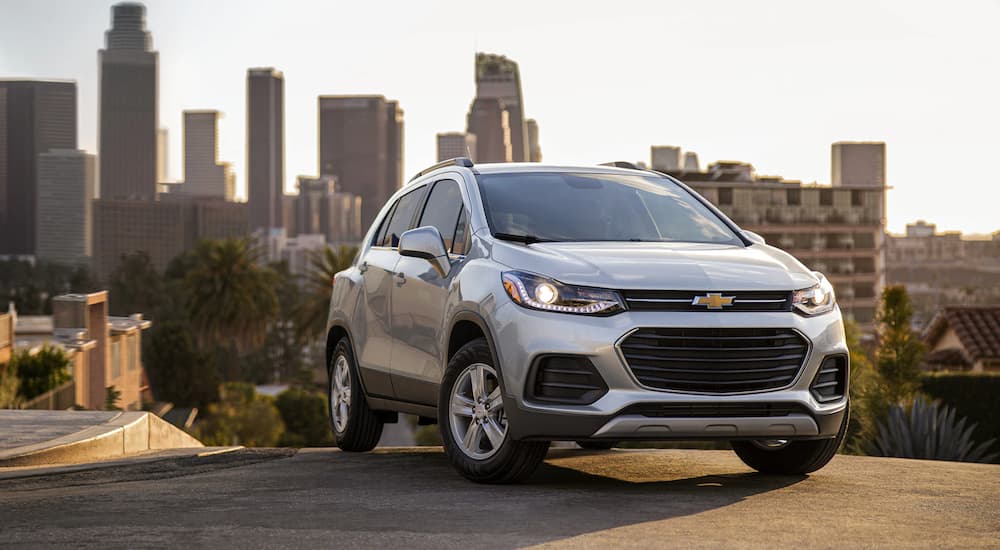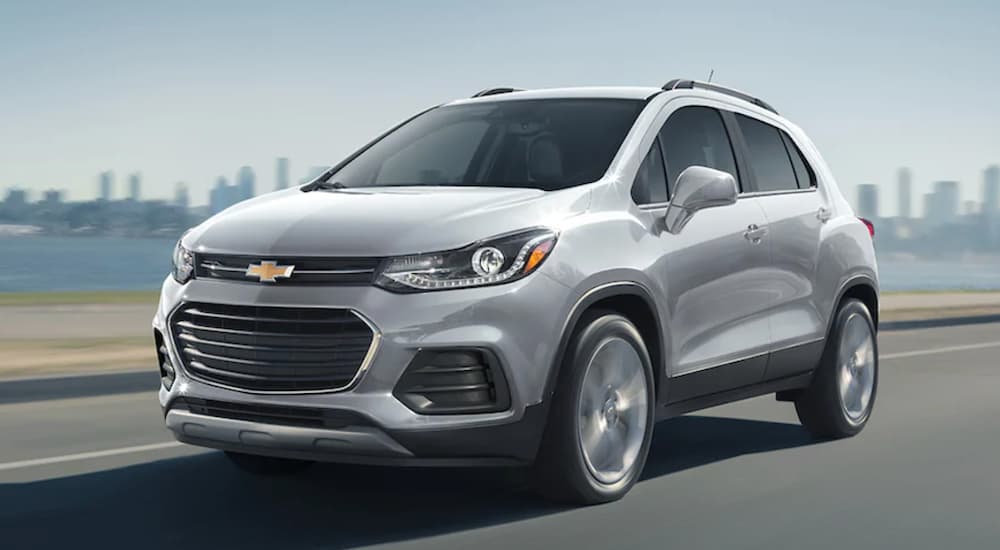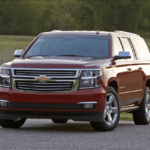As if it wasn’t confusing enough to wade through the hundreds of available sport utility vehicles (SUVs) to find one that works for your lifestyle, automakers are muddying the waters even more, designating sub-categories and sub-sub-categories that have many buyers scratching their heads. Case in point: subcompact utility vehicles like the 2022 Chevy Trax vs. 2022 Kia Soul.
Isn’t a crossover the same as an SUV? you ask. Well, no. Not exactly. But also, it depends. The terms are often used interchangeably within the smaller size categories, like the subcompact and compact segments. It can get confusing fast, because the key difference between an SUV and a crossover is that an SUV sits on a body-on-frame truck platform and a crossover is built on a unibody platform. Smaller utility body styles don’t utilize body-on-frame construction, yet they’re still called SUVs.
Instead, choosing and differentiating boils down to size, ride handling, off-road capability, and even towing and hauling capacity. Crossovers tend to favor on-road driving, offering more car-like ride handling characteristics. Conversely, SUVs are bulkier and favor a more rugged driving experience. If you’re on the hunt for a subcompact ute, here’s how to determine which is which.

Body-on-Frame vs. Unibody Construction
One characteristic SUVs and crossovers share is a taller ride height. Beyond that, they couldn’t be more different. In fact, crossovers have more in common with sedans and other passenger cars. To understand why, it’s important to discern the basic architecture of an SUV from that of a crossover. The bones matter, because they affect everything from ride quality to fuel efficiency—and even how well they protect occupants in a crash.
Conventional SUVs incorporate body-on-frame construction. Also known as a ladder frame, body-on-frame simply means that the vehicle’s body is mounted to a rigid chassis, or frame. The frame supports most of the vehicle’s components, such as the engine, transmission, and axles. It’s how some mid-size pickups and most full-size rigs are engineered, and many larger SUVs still incorporate body-on-frame to this day. You will not find a modern-day subcompact “SUV” with body-on-frame construction.
Unibody construction is almost the complete opposite of body-on-frame because the body and frame are one. The industry term for unibody construction is monocoque, and automakers shifted to the unibody style for several reasons. First, unibody construction is lighter, which facilitates improved performance and better fuel economy. That’s especially true now, because manufacturers are swapping traditional steel body panels for lighter versions made with materials like aluminum and carbon fiber.
SUVs with body-on-frame construction tend to have a rear-wheel drivetrain, while unibody-designed crossovers are almost exclusively front-wheel drive. Similarly, SUVs use four-wheel drive, not all-wheel drive, to send power to all four wheels. All crossovers with that capability use an all-wheel drive system, which favors better road manners and is generally active all the time vs. a shift-on-the-fly 4×4 system. As an example, the subcompact unibody Chevy Trax is known for its car-like handling, and it’s offered in either front-wheel drive or all-wheel drive, not four-wheel drive.
Overlapping SUV/Crossover Features
In the last decade, automakers have adopted unibody construction on a widespread level, but some haven’t swapped out the term SUV for the more technically-accurate term, crossover. What this means is that vehicles referred to as SUVs are likely built with unibody architecture. This creates some confusion in a side-by-side comparison, because it used to be the only point-of-difference. So, as long as the terms crossover and SUV continue to be used interchangeably, it’s best to consider size as a more relevant distinguishing factor.
Other than the Jeep Wrangler, a handful of full-size luxury holdouts, and other specialty vehicles, every remaining body-on-frame SUV sits in the large (a.k.a. land yacht) category. Still, manufacturers seem committed to referring to unibody-constructed utility vehicles as SUVs. Even Chevy calls the Trax a “small SUV” on its website.
Since automakers don’t agree on common naming conventions, buyers should do their research. A good start? Find out how it’s built.
The 2022 Chevy Trax offers similar capabilities as a traditional SUV, so it makes sense that Chevy still calls it one. Its 48.4 cu.ft. of cargo space, available all-wheel drive, and 4×4 derivative components, like skid plates and a higher ground clearance, all give it an SUV-like vibe. It may explain why so many buyers are attracted to it. Still, the Trax is built with unibody construction, so it’s going to ride more like a car and achieve better fuel economy ratings.
In short, if you go by conventional definitions, unibody crossovers and body-on-frame SUVs don’t have much in common beyond their boxy body styles and taller ride height. SUV equals rugged, durable, and off-road ready. Unibody is synonymous with fuel efficiency and a smoother ride.
Is it always an either/or proposition? No, because there will always be some capability overlaps. And, because many budget subcompact crossover buyers want the best of both worlds—a car-like ride and the rugged look and dimensions of an SUV—automakers will likely continue using the terms interchangeably.
SAVs, CUVs, and SATs, Oh My
It’s annoying enough when someone uses the term crossover SUV (or SUV crossover) to describe a particular utility vehicle, but overzealous marketing teams and ad agencies keep inventing new names, like Sports Activity Vehicle or Crossover Utility Vehicle, to help an entrant stand out. Though it might be considered clever product marketing, it only adds to buyer confusion. To simplify, start with two main categories: SUV and crossover.
From there, classification moves to subcategories. Within a subcategory are sub-subcategories. What constitutes a Sport Activity Vehicle (SAV)? It’s unknown, but in subcategory and sub-subcategory taxonomy, an SAV falls within the crossover subcategory. SAVs apparently combine SUV capability with sports car performance.
Confusing the category even more are the slew of new electric models flooding the market. Chevy’s Bolt EUV is one example. EUV stands for electric utility vehicle.
To avoid confusion, stick to conventional definitions and assume the vehicle is a crossover—unless it has a body-on-frame construction. This way, you’re choosing with eyes wide open. It’s possible that American drivers will eventually reach crossover fatigue, but sales numbers don’t support it happening anytime soon. That’s why automakers are mostly abandoning body-on-frame construction. It’s all about demand.
Because there’s no universally accepted definition for the term SUV, know that automakers will likely weave it into their crossover product descriptions. Growing consumer confusion might eventually force the issue, triggering the industry to be more clear, but for now, research is your best friend. Focus on the vehicle’s capabilities, dimensions, and features instead.
The Right Fit
At the end of the day, there’s a driver for every vehicle with every category (and sub-category, and so on). Consider the subcompact crossover category, within which there are around 20 different options. Vehicles in this category, such as the Chevy Trax, are priced for first-time buyers. Most offer optional all-wheel drive, so your choice might boil down to style or even something more specific, like infotainment technology.
Unless you have big plans to disappear into the wilderness for long weekends of rock climbing and river fording, you probably don’t need an SUV. That said, people choose SUVs for different reasons. If you tow a large boat or RV, or if you need three rows of seats and don’t want to shoehorn your kids into tight quarters, large SUVs like the Suburban make sense.
For the rest of us, a crossover will do. While they may drive more like a passenger car, crossovers offer plenty of advantages over their more rugged SUV descendants. From progressive collapse “crumple zones” that keep occupants safer to impressive fuel economy ratings, unibody construction just makes good sense. Plus, since crossovers come in a variety of shapes, sizes, and prices, you’ll have no trouble finding exactly what you want among the vast pool of options.





